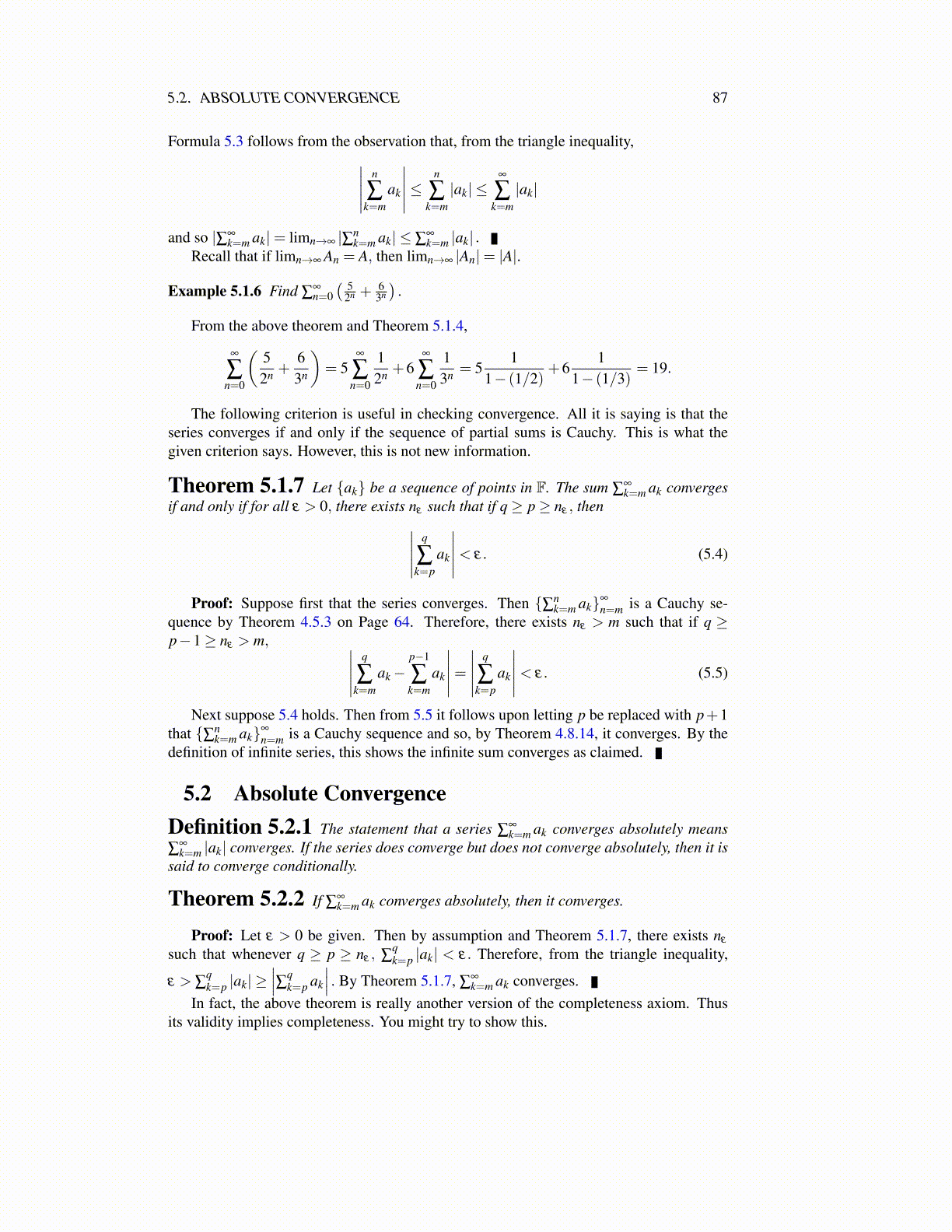
5.2. ABSOLUTE CONVERGENCE 87
Theorem 5.2.5 (comparison test) Suppose {an} and {bn} are sequences of non neg-ative real numbers and suppose for all n sufficiently large, an ≤ bn. Then
1. If ∑∞n=k bn converges, then ∑
∞n=m an converges.
2. If ∑∞n=k an diverges, then ∑
∞n=m bn diverges.
Proof: Consider the first claim. From the assumption, there exists n∗ such that n∗ >max(k,m) and for all n≥ n∗ bn ≥ an. Then if p≥ n∗,
p
∑n=m
an ≤n∗
∑n=m
an +k
∑n=n∗+1
bn ≤n∗
∑n=m
an +∞
∑n=k
bn.
Thus the sequence,{∑pn=m an}∞
p=m is bounded above and increasing. Therefore, it convergesby completeness. The second claim is left as an exercise.
Example 5.2.6 Determine the convergence of ∑∞n=1
1n2 .
For n > 1, 1n2 ≤ 1
n(n−1) . Now ∑pn=2
1n(n−1) = ∑
pn=2
[ 1n−1 −
1n
]= 1− 1
p → 1. Therefore,
use the comparison test with an =1n2 and bn =
1n(n−1)
A convenient way to implement the comparison test is to use the limit comparison test.This is considered next.
Theorem 5.2.7 Let an,bn > 0 and suppose for all n large enough,
0 < a <an
bn≤ an
bn< b < ∞.
Then ∑an and ∑bn converge or diverge together.
Proof: Let n∗ be such that n ≥ n∗, then anbn
> a and anbn
< b and so for all such n,abn <an < bbn and so the conclusion follows from the comparison test.
The following corollary follows right away from the definition of the limit.
Corollary 5.2.8 Let an,bn > 0 and suppose limn→∞anbn
= λ ∈ (0,∞) . Then ∑an and∑bn converge or diverge together.
Example 5.2.9 Determine the convergence of ∑∞k=1
1√n4+2n+7
.
This series converges by the limit comparison test above. Compare with the series ofExample 5.2.6.
limn→∞
(1n2
)(
1√n4+2n+7
) = limn→∞
√n4 +2n+7
n2 = limn→∞
√1+
2n3 +
7n4 = 1.
Therefore, the series converges with the series of Example 5.2.6. How did I know what tocompare with? I noticed that
√n4 +2n+7 is essentially like
√n4 = n2 for large enough
n. You see, the higher order term n4 dominates the other terms in n4 + 2n+ 7. Therefore,reasoning that 1/
√n4 +2n+7 is a lot like 1/n2 for large n, it was easy to see what to